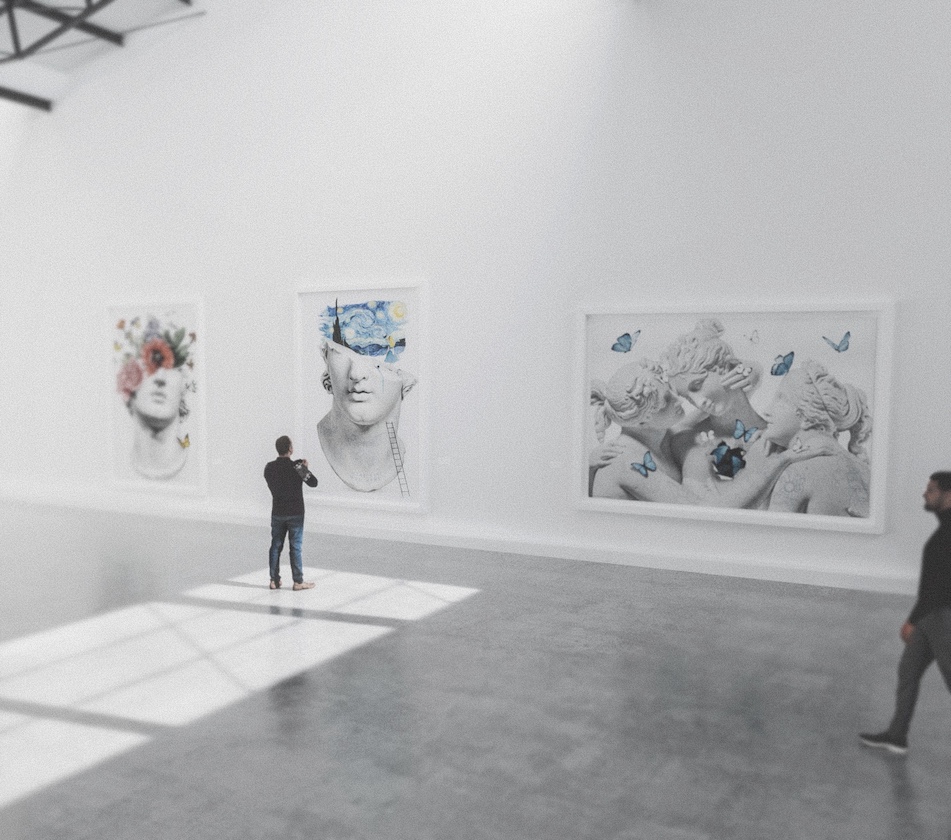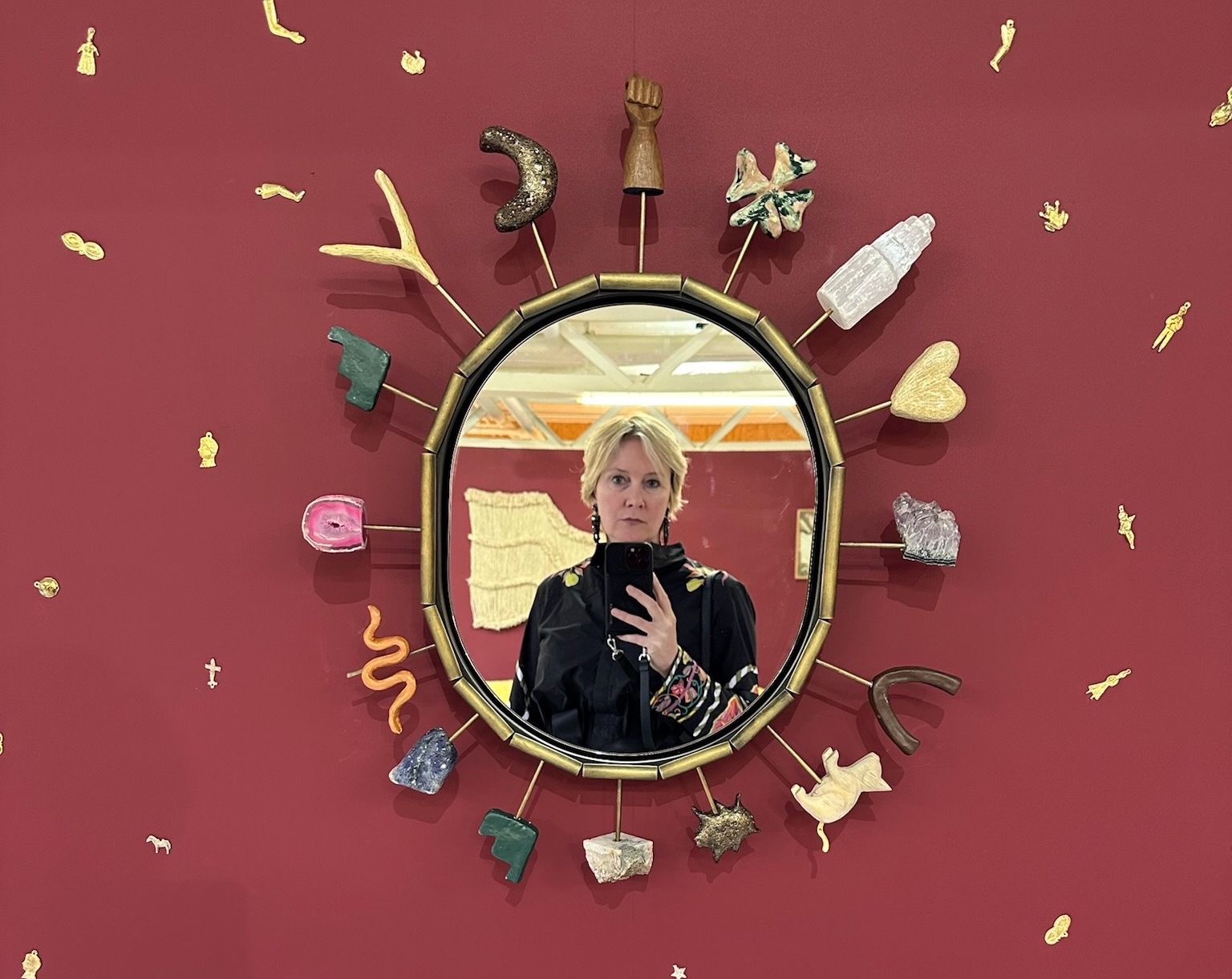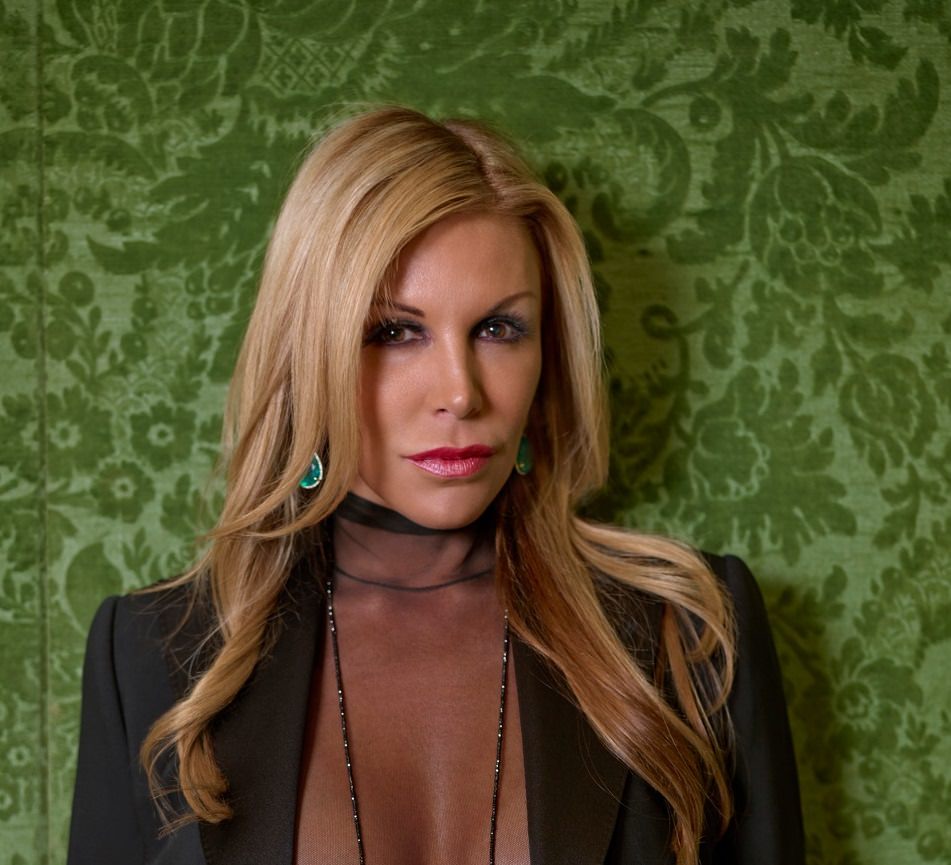Alexandre Arnault and Daniel Arsham share an appreciation for design, as the CEO of the German luggage brand RIMOWA and as an artist, respectively. In recent years, RIMOWA’s suitcases have become a staple of international travel, recognized immediately by their anodized aluminum bodies. Similarly, Arsham’s sculptural work has infiltrated culture far beyond the art world, creating everyday relics that are equal parts familiar, puzzling, and futuristic.
Both look at design through a historical lens. Arnault is examining RIMOWA’s 122-year heritage, at times harking back to trunks and cases and reimagining them with modern-day advancements. Arsham is manipulating architecture and object, blending nonfiction and dystopian fantasy for a meaning of art anew.
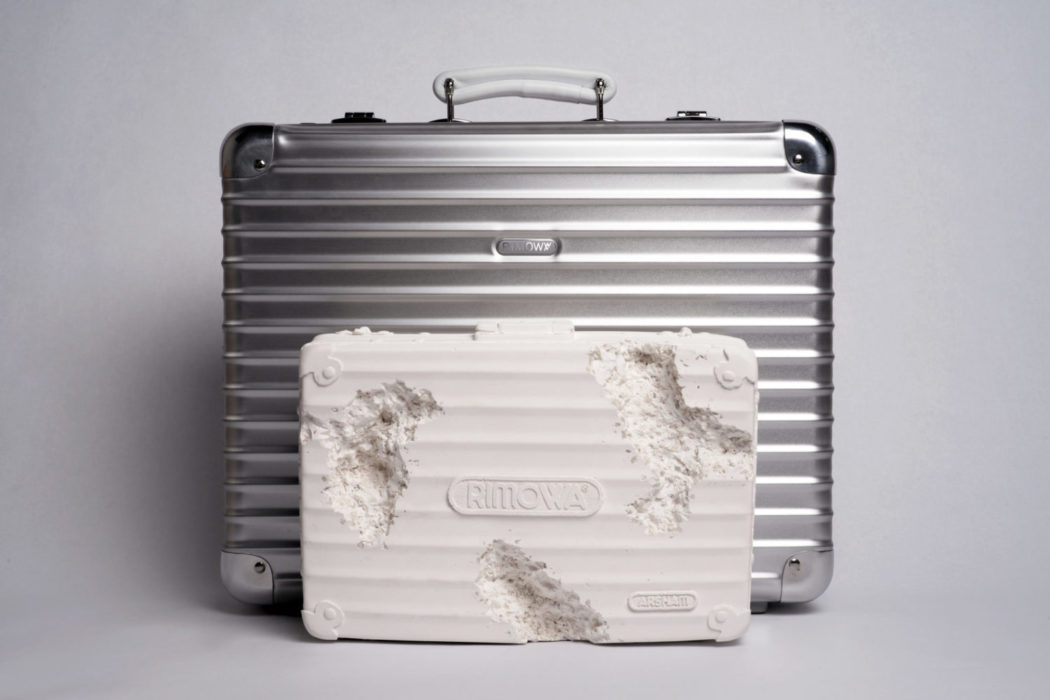
RIMOWA x Daniel Arsham Eroded Attaché, courtesy of RIMOWA.
Naturally, they’ve been drawn to each other’s work for years. Two years ago, Arnault visited Arsham at his studio in New York and they began discussing a collaboration. Exactly one year later, in May 2019, the world saw their creativity collide with an all-new suitcase. After a trip to Cologne to see the brand’s archives, Arsham created a commemorative piece as an ode to the brand’s Attaché case. The limited-edition case came with a work of art, as well, which fit inside when not in use.
Over Zoom, Whitewall spoke with Arnault and Arsham about the new RIMOWA piece, how collaboration advances ideas, and what the future holds.

Whitewall Winter 2021 Collaboration issue cover. Process shot for the RIMOWA x Daniel Arsham collaboration, photo by Austin Snyder, courtesy of Daniel Arsham Studio.
WHITEWALL: How did you first meet?
ALEXANDRE ARNAULT: I was in New York and reached out to Daniel because I’ve been a fan of his work for a long time, and I saw a lot of our mutual friends at his studio. I went one morning, and that’s when we started talking about collaborating together. He already had a few ideas, although nothing was on paper, but I recall quite well calling my team right after leaving his studio in my Uber back to town.
WW: Daniel, what was your first interaction with RIMOWA?
DANIEL ARSHAM: I can remember the first RIMOWA case that I bought in the Omotesando Hills RIMOWA in Tokyo. I don’t even remember what the luggage was that I had, but it broke, so I went to RIMOWA. You know, it’s an expensive luggage, but I’ve had that thing for like 12 years. I’ve sent it back twice to get repaired, it has all these dents, and it’s kind of an amazing thing in that all these stickers are on it. It’s this thing that carries a memory with it. It has an age to it, but it’s still totally functional and resilient.
WW: What was it like to visit RIMOWA’s archives in Cologne?
DA: They have this room, sort of in the basement of the factory, that has cases going back to the origin of the company. Originally, many were the collection of the [Morszeck] family.
They go all the way back to the cases and trunks before they were even aluminum. I found this small case that was designed for a camera—they don’t produce it anymore—and made a sculpture of that to sit inside the new Attaché case. This case, that was actually housing something a little self-referential, ended up being super-successful.
When I originally thought about RIMOWA, it was about these things that you see in film—even in Pulp Fiction, when they open up the case and there’s this glowing light within it. It was a device for me that meant value. It meant something that needed to be cared for. Obviously, the design of that luggage is very recognizable. You know what it is as soon as you see it. It’s one of the few cases where a brand is so tied with a material. You don’t even have to see the logo; you know what it is before you see the branding. I thought that there was something interesting there to work with.
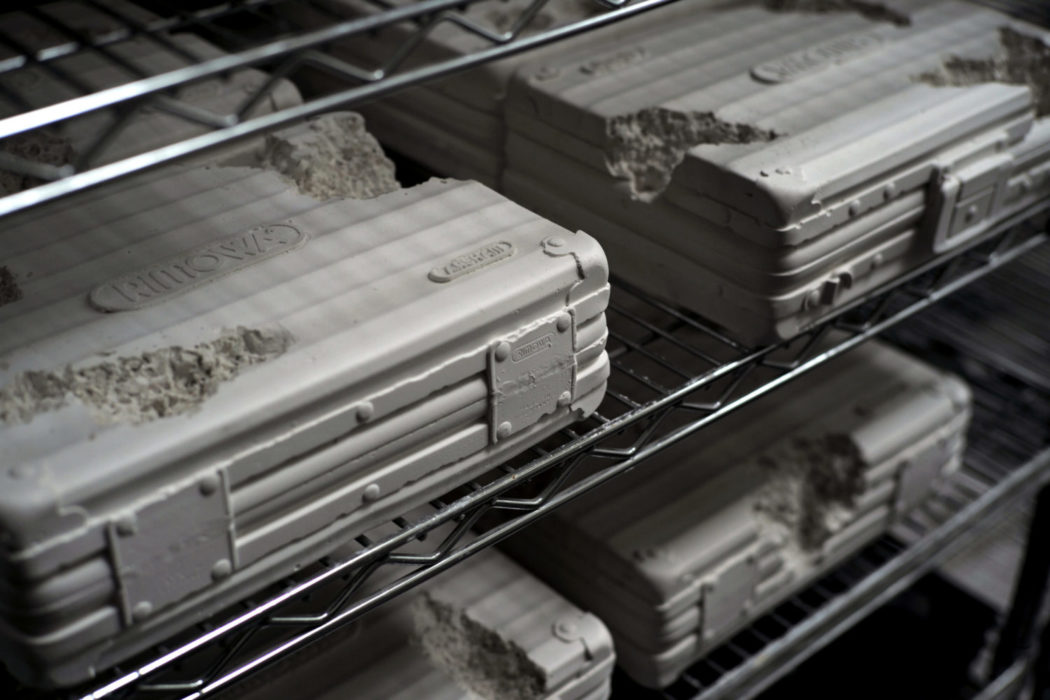
Process shot for the RIMOWA x Daniel Arsham collaboration, photo by Austin Snyder, courtesy of Daniel Arsham Studio.
WW: You both are familiar with collaborations. How do you typically approach a partnership?
AA: It has to make sense—be relevant and authentic. What we try to do is never target one specific consumer group by looking at what all the brands do today, but more doing something that really felt authentic. Ultimately, we wanted to also try to do something that made sense and wasn’t just painting a suitcase black and calling it a collaboration. It was really bringing something to the consumer, to the brand, and to the other parties, which is very important.
DA: All different types of collaborations that I’ve worked on were generally things that I sought out. Usually, brands come to me and ask if I want to work on something, and generally it’s a “no.” The one brand that did come to me that was a “yes” was Dior, when Kim [Jones] asked me to work with him on that. It has to make sense. It has to be something I’m already interested in or that I use in my everyday life.
WW: What do you consider a successful collaboration?
DA: I think there’s a number of ways to gauge it. Obviously, the level of interest. I generally make things that I want to see exist in the world. And I think the reaction to this project was great.
We ended up launching the first case in an auction that benefitted Cooper Union, so before it was even released, it had this incredible response. Because the edition number was limited, it’s obviously quite difficult to get. And people are still sort of out there trading them and coveting them.
AA: Success comes in the level of interest, but also in the level of innovation. Collaboration has been a way to push the teams forward and to do completely new things, and not just resting on the laurels of selling aluminum and polycarbonate suitcases. When we work with Daniel or Alex Israel, for example, which have been two big invents that we’ve done, we learned the 16-million- pixel printing on aluminum method. That was a real industrial technology we had to master before this that we probably never would if a collaboration hadn’t come into play.
The level of innovation that drives us to better ourselves is a factor of success.
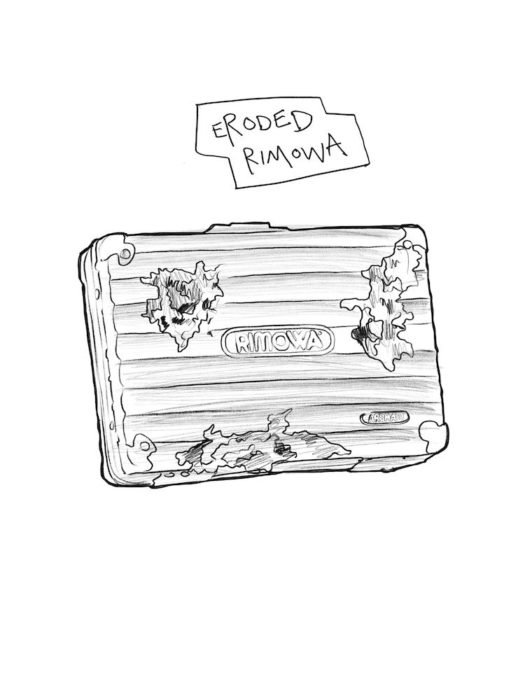
Study for Eroded RIMOWA by Daniel Arsham, courtesy of the artist.
WW: Travel has drastically changed due to COVID-19, becoming a precious luxury in itself. What does travel represent for you today?
DA: I’ve been traveling so much—probably too much—over the last 10 to 15 years for work. I think this is the longest I’ve been in one place. It’s been an interesting pause to reconsider how we place value on those things. It’s funny because I was actually moving some stuff around between my houses and I used all my old RIMOWA cases that I have. It was this kind of memory of packing a suitcase that I hadn’t had in so long. Obviously, that stuff will come back at a certain point, and I think travel will be much more memorable. I think, moving forward, we’ll mark moments in life through the places we’ve been—the same way our luggage has these marks on it.
AA: It’s a mix between discovery, work, and inspiration that have to be all together. The past 10 years, I’ve always tried to link everything together—like going to Japan for work, discovering something on the side, meeting up with friends somewhere else in the region—and not just doing one thing, which always had purpose.
WW: Do you think you’ll go back to traveling as much as you did?
DA: I want to say no, but I’m thinking, “Do I really have to go to all the stuff that I went to?” I would go to Dubai for like two days if I had a project there. In some ways, I think that it gives me a connection. But there are certain places that I’ll go to at the drop of a hat, no matter what. Any invitation that I ever get to go to Japan, I don’t care how long it is, I’m going to go. But other places? I don’t know. I don’t know that yet. For now, I’m being super-limiting. I don’t have any travel plans until early next year. So, we’ll see from then.
AA: Ultimately, I’ll have to continue traveling. Working in an environment where retail is so important, I have to be on site to look at locations, talk to the teams, see the trends and what’s happening in the streets, and what’s working where. You can’t do that over Zoom whatsoever.
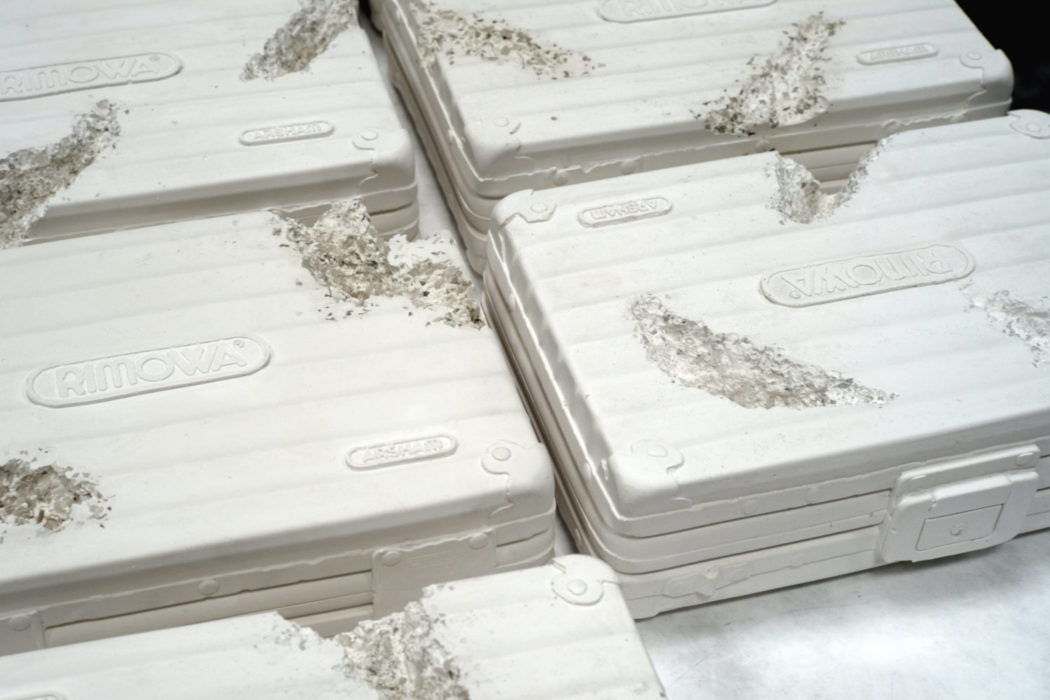
Process shot for the RIMOWA x Daniel Arsham collaboration, photo by Austin Snyder, courtesy of Daniel Arsham Studio.
WW: How are you both thinking about sustainability and creating in a more responsible way?
DA: We implemented something in my studio ironically at the end of last year when I was traveling so much. It’s been so much less this year, but we effectively purchase carbon offsets for every single activity we do. That includes all of the flights we take and—a big thing that you don’t think about with artwork—the shipping. So, we actually purchased double the amount. I was shocked, given the volume that we do, how inexpensive it is to do. Obviously, it’s something that you have to factor into your cost, but moving forward, I’m going to be conscious of travel being a different thing.
AA: There aren’t many brands that can say they are using the same thing they bought 12 years ago. Our product being so robust and timeless means that
people can use them for a very long time, which makes them sustainable in their essence. Then, in everything we do, we really look at materials that are trying to be more eco-friendly and responsible. That’s the two main areas where we’re focusing. Robustness, sustainability, and new ecologically developed materials in terms of what we’re developing.
We’re working with bionic yarns that are recycled. We’re improving the quality in aluminum to make it more recyclable and using recycled aluminum from the first basis.
WW: How have the past few months and these uncertain times impacted your practice?
DA: Most people know my work primarily through sculpture. It’s been the primary focus of what I’ve been showing for the last 10 years or so, but I actually studied painting in school. One of the big strengths of quarantine is that I’ve gone back to painting. It was the only thing that I can do in that space, and it actually formed this whole new direction in the work. The last time that I had paintings in an exhibition was around 2011 or 2012. I’ve gone back to painting, back to drawing, and I’m integrating that into some future exhibitions as well.
AA: It’s drastically changed our essence. People were buying suitcases to travel, but people aren’t traveling anymore. Even if it’s a very desirable product, people still aren’t buying suitcases. We’ve tried to focus and refocus. We’ve always been a travel company, but now I’m telling my teams we should think of ourselves as a mobility company. We’ve been actively trying to develop things in this category.
The next big thing for us is what happens with suitcases. How do we make them even better? How do we make a new one?
WW: What does the future look like for both of you?
DA: So much of my work has been obsessed with this idea of the future, in general. Imagining something one thousand or ten thousand years in the future. Now, it’s in some ways easier to imagine what it’ll be like in a thousand years than what it’ll be like in six months. So, there’s a sort of curious quality about that. It’s something that’s driving my thought process in the studio. In any shift like this, when we look back in an art historical context, many of the most pivotal works in art history have been made during or just following very challenging global events. There will be work produced out of this time that will be very memorable.
AA: The future for us is a strong focus into innovation and categories linked to mobility. We want to make sure we can still be a part of people’s lives. We still want to make them better—even from the home to the gym, or to the office.





